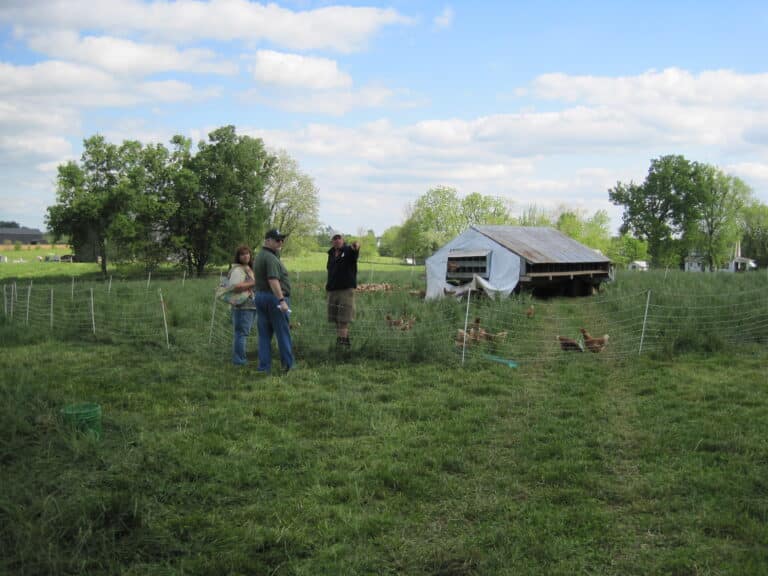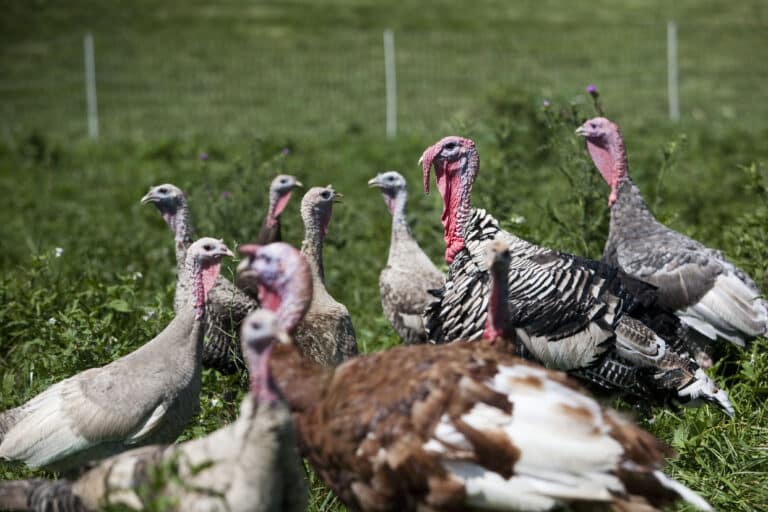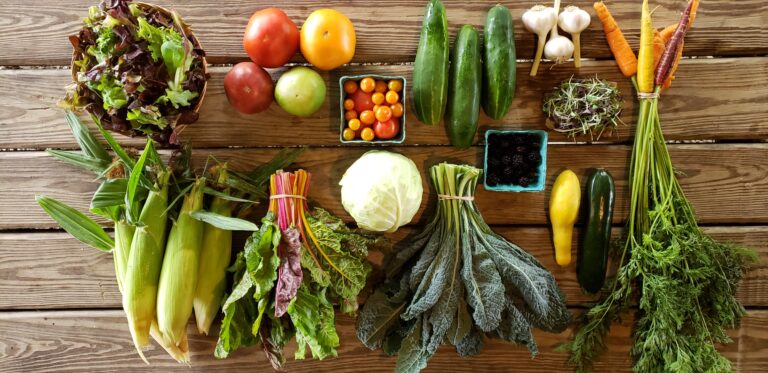To get back to our farm tour series, traipsing east from this year’s vegetable field along “John T’s field” (John T. was a friendly neighbor who lived directly across highway 460 for almost 40 years), we come upon a narrow walk-through gate in the fence that opens into the chicken field. I think it was called “Merke’s back field” for generations, until Merke moved away and we got chickens. Anyway, this field displays all that is good with the local-food movement.
This 10-acre field, and the similar ones around it, produce most of Elmwood Stock Farm’s poultry and lamb, and some of our beef. For all of time, these fields have been cow pastures, too hilly or small for cropping, and they still are. As the cow herd rotates from field to field for their daily ration of grass, they come through here several times per year.
The sheep have their own fast rotation within these fields. We use portable electric fence netting to form paddocks. By moving the flock (actually, they walk so technically move themselves) every few days, they consistently have access to fresh forage—abundant and clean, optimum nutrition, essentially void of debilitating internal parasites. When you consume Elmwood Stock Farm lamb, the only things that went into making it are grass, salt, municipal water and labor. Mother Nature takes care of the rest. Simple is not always easy, and in this case, not really hard work, either.

In this field, we also see the hen houses on old, worn-out wagon or truck frames. We move these using a 60-year-old tractor weekly, along with their own electric-net enclosures. They may appear randomly positioned in the field, because they are. And yet, 250 chickens give us eggs to feed your families every day.
The broiler chicken huts (chicken tractors) sit in pairs on the flat ground, moved twice per day to fresh pasture. By now you know why. The “simple” approach to animal husbandry is a little more work with broilers, as they require additional protection from predators and the weather.

Then there are the turkeys. We hatch the heritage-breed turkeys from our own breeding flock. This is the only way to have the number we care to raise for your holiday requests. These turkeys, the coolest domesticated animal on the planet, have their own version of moveable housing and protective electric netting in the turkey field. Turkeys and chickens are kept separate because chickens carry a disease that is harmful to turkeys. Look for a longer-winded turkey story from me in the coming weeks.
Before the poultry arrived at Elmwood Stock Farm, there was early conversation about how much cow pasture was going to be taken up with fowl, and were there any cross-contamination issues with cattle, and where were we going to process and sell the chickens and turkeys? We did our homework and forged ahead. Turns out, by importing nutrients in the form of feed for the birds, there is actually more grass for the cattle, and lots of people look forward to the eggs and meat. How’s that for regenerative agriculture?
We can’t see the pigs from this part of the farm, and they are worthy of their own story in due time, but suffice it to say, they have their own pig-friendly rotation in small plots with protective netting (mostly protecting the produce from them) in two different fields. The sows are in a paddock way back by John’s house, where one had a litter of piglets last week, and the hogs are in the “tank” field right now. They love fresh forage and grubs, and they like to root up the plants looking for more, so their positioning is factored into the farm’s eight-year crop rotation plan.

Pretending again that we’re actually walking together on a farm tour, this is the part where you ask me entertaining questions as we walk back to the picnic area, folks processing all they’ve seen in the past couple of hours. (And I want you to ask me questions!) To facilitate everyone’s ability to put it all together, I end the tour with our version of the Top Ten Things you can do right now to support a healthy local food system:
10. Grow some of your own food. You will become much more aware of nature and gain an appreciation for freshness and flavor. Since you are probably not going to grow everything you eat, you can get the rest from us.
9. Have something local and organic on your plate at each meal for 30 days. (They say it takes 30 days to start a new habit.) Start with a carton of eggs, and you are well on your way.
8. One meal per week, have everything on your plate be local and organic. It’s not as hard as you might think. Burger, roasted potatoes, tossed salad: Bingo.
7. Look for the Organic seal at the grocery store. Having personally served on the National Organic Standards Board for five years, and Elmwood Stock Farm getting inspected every year as part of our USDA Organic certification for the past 20 years, I can attest that there is integrity behind the seal.
6. Take the batteries out of your TV remote, and cancel your video-streaming service. You will have time to grow more and cook more.
5. Consume grass-fed meats, milk and eggs. Confining animals in close quarters and hauling in lots of grains alters the chemistry of their digestive system. Human evolution is based on consumption of animals on natural, forage-based diets.
4. Go to the farm-U-see, not the pharm-a-cy. The data coming out of the Kentucky Farm Share Coalition confirms what we should already know. If you spend your money on wholesome, organic foods you are likely to spend less on doctors and medicine.
3. Order the locally sourced item at a restaurant, and support restaurants that buy local in general. Ask what’s local everywhere you eat; eventually they will hear us. Supporting our local establishments now is as important as ever, and there are still many—The Sage Rabbit, Sunrise Bakery, Kentucky Native Cafe, Apiary Fine Catering and J. Alexander’s, included—who source food from Elmwood Stock Farm in the midst of the challenges of trying to keep afloat during a pandemic.
2. Go to the farmers market in the rain. It will make the farmer’s day. Given our current operating state, I could also suggest: Place your online order to pick up at the farmers market in any weather.
1. Join an organic CSA. Experience firsthand what the health, flavor and convenience hype is about.
Thanks for embarking on this farm tour over the past few weeks to learn about where your food comes from. We miss seeing you. —Mac Stone



Made with 
